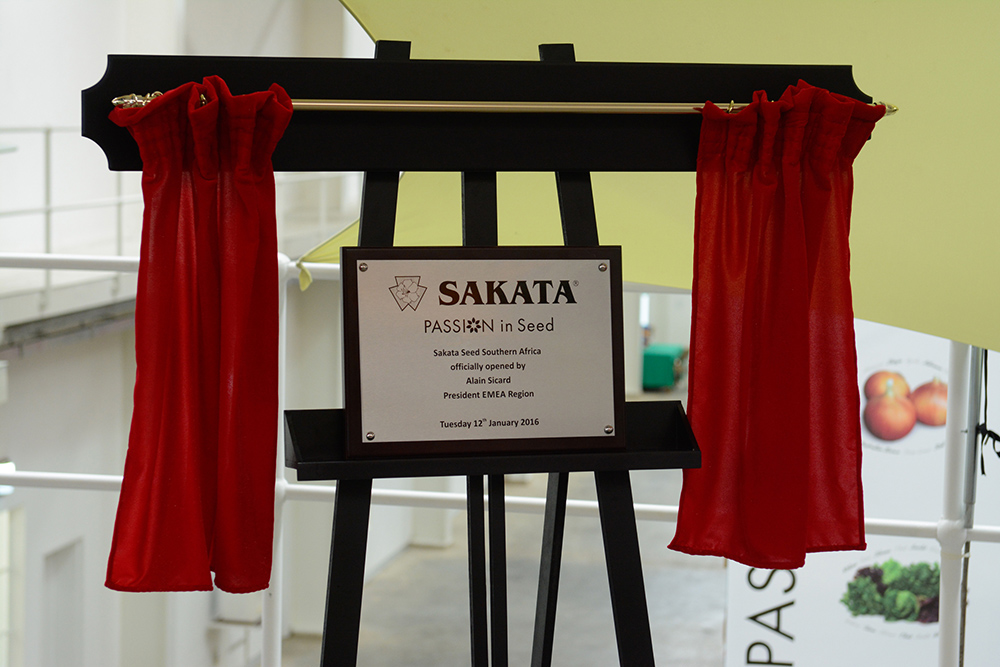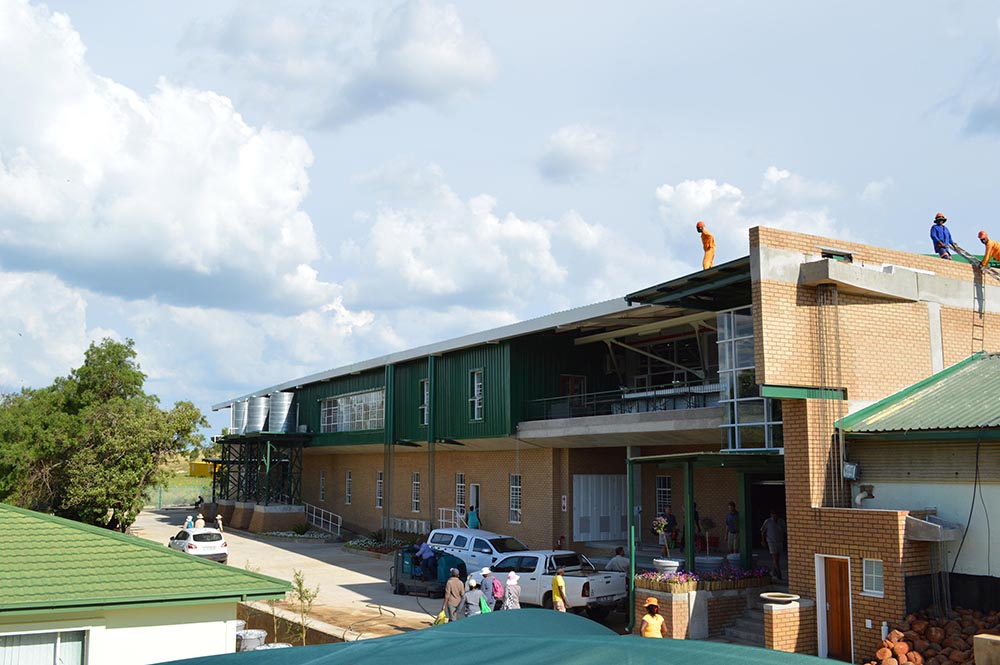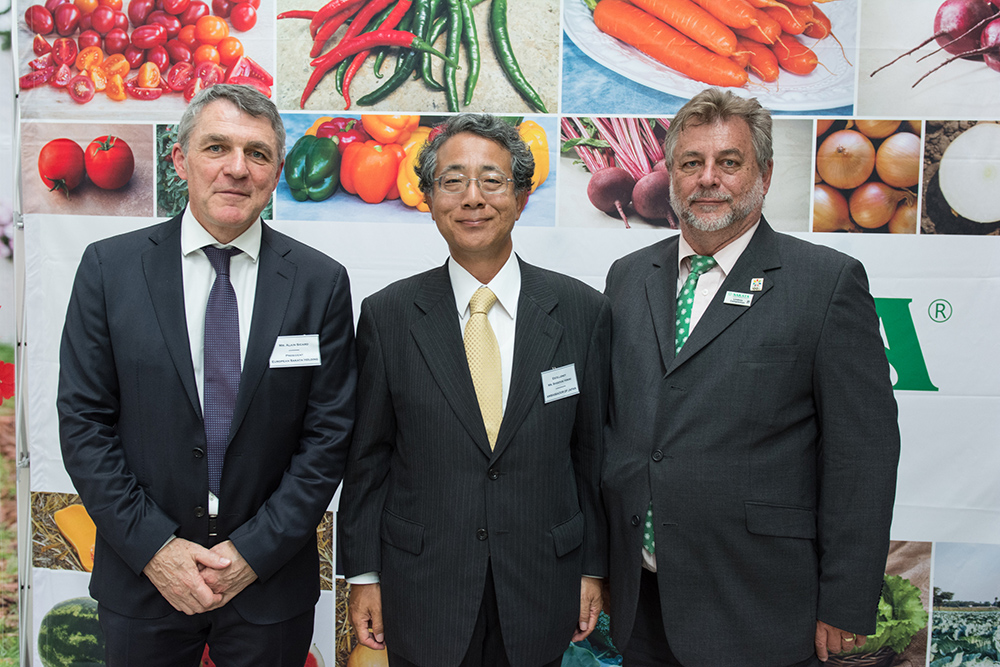Sakata Seed Southern Africa is proud to announce the launch of its new logistic centre, which was officially launched at an opening ceremony on Tuesday, 12 January 2016.
Proceedings began with a keynote address by Lindsay Campleman, CEO, Sakata Seed Southern Africa regarding the objectives and capacity of the the new logistic centre.
This was followed by a televised address from Mr Hiroshi Sakata, President of Sakata company, where he spoke of Sakata’s Passion and the importance of Sakata’s people as the biggest asset that makes the company a successful one. He also wished Sakata Southern Africa all success with the new logistic centre going forward.
The occasion was marked by the attendance of His Excellency, Japanese Ambassador Shigeyuki Hiroki; Alain Sicard, Sakata President, EMEA Region who officially opened the new logistic centre and the revealed the plaque.


Information on the actual warehouse:
In line with Sakata’s sensitivity to environmental issues, we have made an effort to minimize the impact of this facility on the environment.
- All existing tree clusters and the rocky out crop immediately adjacent to the building have been retained.
- The excavation to a depth of 5m into the slope on the south side of the building has minimized the height of the building above ground. It also ties in with the site profile which follows the natural gradient of the land.
- Natural light has been used by installing narrow strips (180mm wide) of translucent sheeting to allow some natural light in without undue heat gain.
- High quality insulation (80mm Lamdaboard) has been used on the roof and walls to moderate temperatures. It cannot melt, drip or spread fire and is wind and water resistant. It is also aesthetically appealing and recyclable.
- The underfloor heating in the seed packing area is a Hydro Flow Heating System made up of solar panels, water storage tanks, a heat pump and water pipes looped into the concrete floor which is cast on top of 50mm high density polystyrene insulation. Solar panels heat up the water which is pumped into the pipes in the floor. The aim is to ensure that winter temperatures are as close to 21C as possible for maximum comfort and efficiency.
- Storm water is harvested off the roof and hard surfaces. It is collected in tanks, an underground cistern and a water attenuation pond (on the left as you come through the main gate). The idea was to create a natural looking pond in an existing depression which was lined with excavated rock. Indigenous planting and indigenous fish species enhance the natural process of water purification. Five species of Tilapia
(recommended by the Hartebeespoort fishery) were introduced as fingerlings in September and seem to be flourishing.
- A Fibretech sub-soil drainage system has been installed under the new building to deal with natural ground water run-off. A herringbone pipe system collects the water and feeds it into the storm water system.
- Since we have no municipal services on the site, we also have to deal with sewerage. We have installed a Biobox system to replace the old septic tanks. This biological purification system requires has no moving parts and requires no electricity. It utilizes fixed biofilm technology to achieve odour free effluent suitable for irrigation.
- Various rocky embankments and Terraforce concrete retaining blocks have been visually softened by planting them with indigenous species.
The final result is the insertion of a large building into a sensitive site without this being readily apparent.

